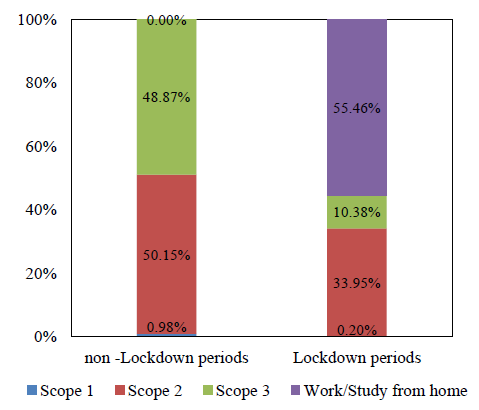Carbon Footprint in the Faculty of Public Health,Mahidol University During Lockdown and Non-Lockdown Periods
Keywords:
Carbon Footprint for Organization, Faculty of Public Health, Mahidol University, Non-Lockdown period, Lockdown periodAbstract
Climate change and its effect caused by excessive anthropogenic greenhouse gas emission is a major crisis that is affecting to be severely environmental problems economic and social development around the world. Furthermore, from the end of 2019 (Dec, 2019), the COVID-19 pandemic is impacting human activities, particularly energy use and carbon dioxide (CO2) emissions. Carbon footprint for the organization is the method used to identify direct and indirect carbon emissions from various activities of the organization and is considered as the first step towards sustainability. This study aimed to compare the carbon footprint of the Faculty of Public Health Mahidol University in the 2020 fiscal year (October 2019 – September 2020) between non-Lockdown period (196 business days: 1 October 2019 – 22 March 2020, and 1 June – 30 September 2020) and Lockdown period (47 business days: 23 March – 31 May 2020). The study covered three categories of emissions including direct carbon emission (fuel consumptions, fertilizer use and wastewater treatment process), indirect carbon emission from purchased energy (including work/study from home while Lockdown period) and other indirect emissions (water consumption, paper use, LPG and plastic bag use in cafeteria and market, waste management and commuting) related to the energy and resources used. The results showed that the carbon footprints during non-Lockdown and Lockdown periods in the Faculty of Public Health, Mahidol University were 20,594.32 kgCO2e/day/period equivalent to 19.78 kgCO2e/capita/day, and 15,151.03 kgCO2e/day/period equivalent to 14.55 kgCO2e/capita/day, respectively. The main carbon emission source in both periods was electricity consumption followed by commuting and waste management respectively. The effectively alternative implementation for minimizing the carbon footprint of this organization is energy conservation. The use of high energy-efficient appliances such as air conditioning and lighting as well as energy-saving campaigns to reduce the power consumption such as turning off the appliance when not use were introduced. The overall carbon footprint achieved during Lockdown period was lower than that of the prior.

